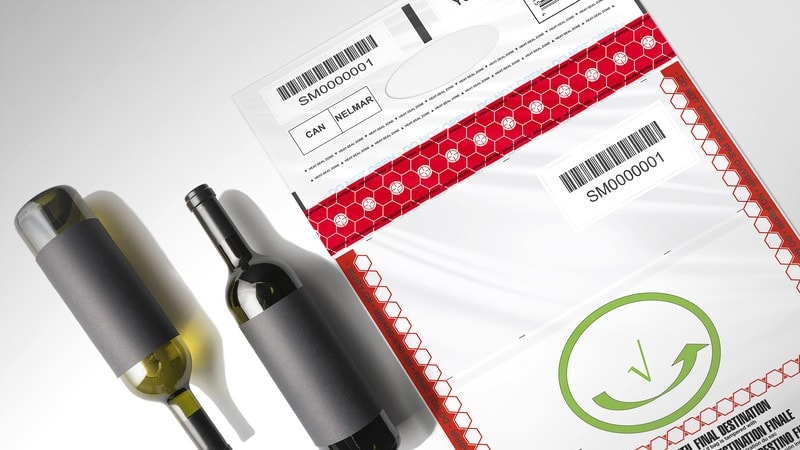Airport security has become increasingly strict, especially when it comes to carrying liquids and other restricted items. To address this, aviation authorities have implemented rules requiring duty-free purchases to be packed in special bags.
Duty-free bags, particularly Sealed Tamper-Evident Bags (STEBs), prevent unauthorized access to restricted items and ensure compliance with security regulations.
In this article, we’ll explore the different types of duty-free bags and their role in air travel security. We’ll also discuss how these tamper-evident solutions work, how they affect security screenings, and what travelers need to know before making duty-free purchases.
What Is a Duty-Free Bag?
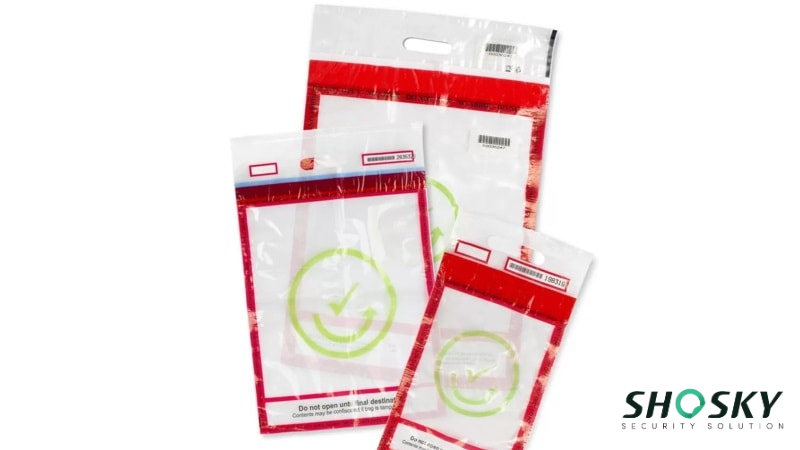
A duty-free bag is a specially designed shopping bag used to carry tax-free airport purchases securely. These bags are commonly issued by duty-free shops at airports and international borders. The main purpose of a duty-free bag is to allow travelers to carry their duty-free purchases through airport security.
These bags often hold liquids, perfumes, alcohol, and other duty-free items. Duty-free bags are different from regular shopping bags. They often feature tamper-evident security seals. This secure closure helps show if the bag has been opened. When you buy duty-free products, the shops provide a duty-free bag and a receipt. And this proof of purchase is required at security checkpoints.
How do Duty-Free Bags Work?
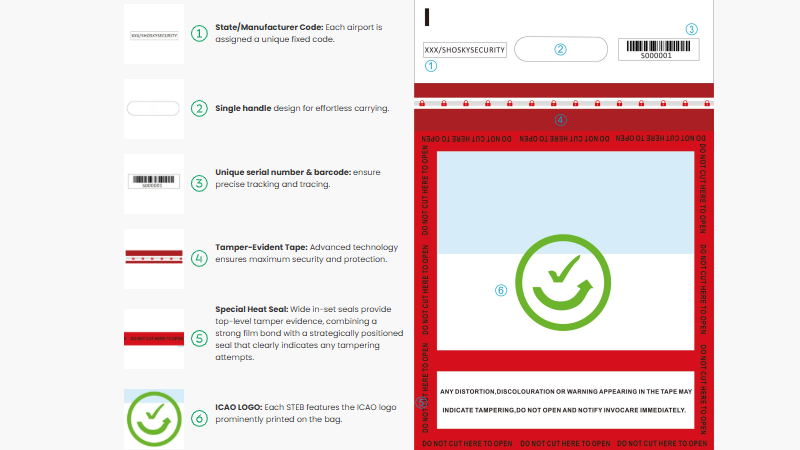
Travelers need to use duty-free bags to carry their duty-free purchases through airports. These bags are sealed at the point of sale to ensure that items inside remain unopened until the traveler reaches their final destination. Security personnel can quickly identify them due to their distinct design, which often includes security seals and clear labeling.
The sealed packaging prevents travelers from using or consuming the items before crossing international borders, ensuring compliance with customs regulations. Once the traveler arrives at their destination, customs officials may inspect the bag to verify its contents. If the seal remains intact, the traveler can usually bring the items into the country without paying additional taxes or duties.
However, if the bag is opened or damaged before passing through customs, the items inside may no longer qualify for duty-free status and could be subject to local taxes. Each country has specific regulations regarding duty-free allowances, so travelers should check the rules before making purchases.
Types of Duty-Free Bags
Not all duty-free bags are the same. The type of bag you get often depends on what you buy and where you’re flying. Some are designed for security and compliance, while others focus on branding or presentation.
Here’s a quick look at the most common types of duty-free bags you’ll see at airports around the world.
Sealed, Transparent Security Bags (STEBs)
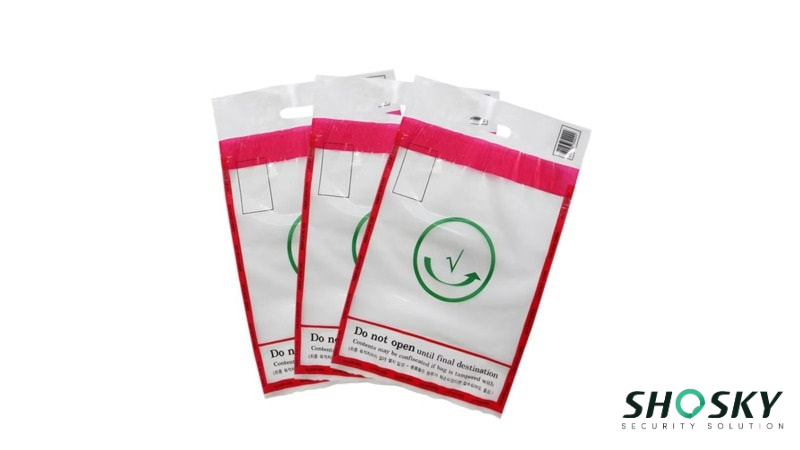
Sealed, transparent security bags, or STEBs, are necessary for carrying liquids and other restricted duty-free items through airport security. These bags are designed to meet international travel regulations. They are often used for duty-free purchases of alcohol, perfume, and other liquids exceeding the standard carry-on limits.
These bags ensure that a certain amount of liquids bought after security checkpoints remain secure. The tamper-evident bag is a key feature. It shows if the bag has been opened. This is very important for connecting international flights. When passengers have a connecting flight, they must keep their STEB sealed. Additional screening might happen if the seal is broken. These bags are a core part of airport security.
Standard Branded Duty-Free Shopping Bags
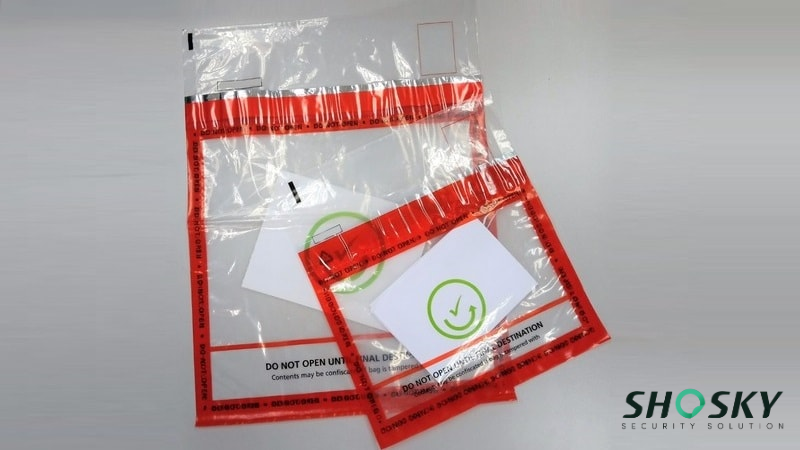
Standard branded duty-free shopping bags are the common bags you get for general merchandise in duty-free shops. These bags are non-sealed. They are used for items that do not fall under strict liquid or security restrictions. You will get these bags for items like chocolates, cosmetics (non-liquid), and souvenirs.
These bags show the logo of the duty-free stores. They are a simple way to carry your duty-free purchases. They are not designed for the same level of security as STEBs. They are more like regular shopping bags. However, they are still a part of the duty-free shopping experience. These bags make carrying multiple purchases easy.
Custom Duty-Free Bags
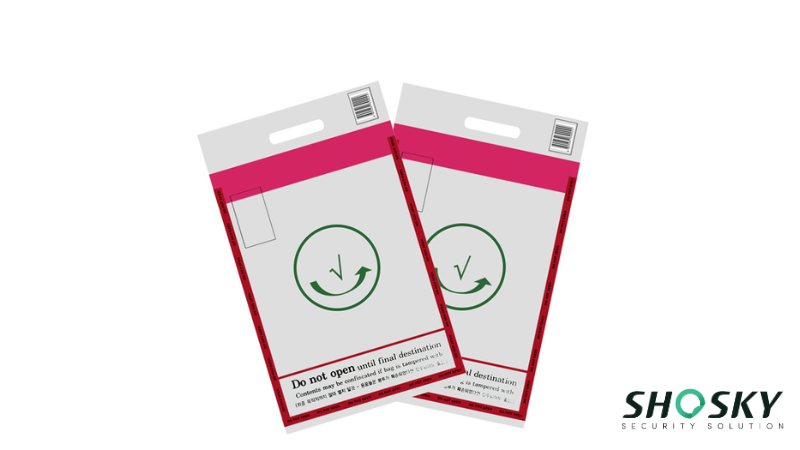
Custom duty-free bags are special designs for premium duty-free purchases. These bags are often used for high-end items. They add a touch of luxury to the shopping experience. These bags can be made from high-quality materials.
Besides, they might have unique designs or features. Mainly, they are given for premium alcohol bottles, high-end perfumes, or luxury goods. These bags aim to enhance the customer experience. Also, they show the value of the purchase. These bags are a great marketing tool as well for duty-free shops.
Key Features of Duty-Free Bags
To meet strict airport security standards and ensure a smooth journey for travelers, duty-free bags are designed with several essential features. These features protect the contents from tampering and damage, while also supporting fast and hassle-free airport screening.
Let’s take a closer look at the key features that make duty-free bags safe, reliable, and travel-ready.
Tamper-Evident Seals and Secure Closures
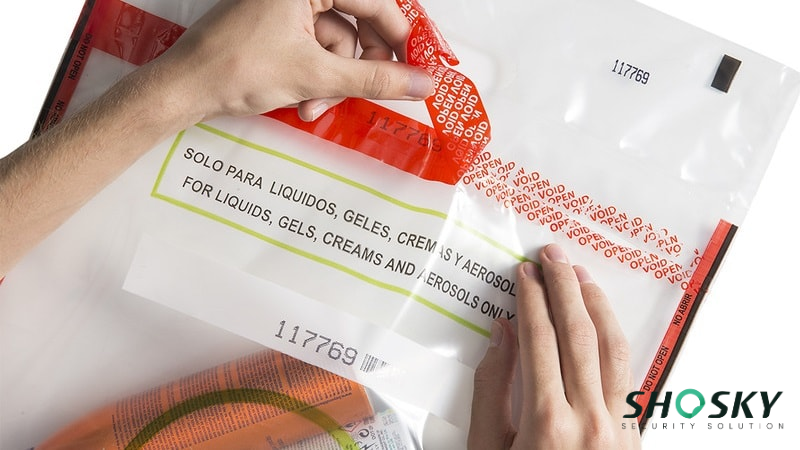
Many duty-free bags, especially Sealed Tamper-Evident Bags (STEBs), have special security seals to prevent tampering. Once sealed, the bag cannot be reopened without leaving visible damage, ensuring that liquids, aerosols, and gels (LAGs) remain untouched until the traveler reaches their final destination.
This feature is particularly important for compliance with TSA, IATA, and other airport security guidelines. If a bag’s tamper-evident seal is broken, security officials may confiscate the items during screening.
Transparent Design for Security Screening
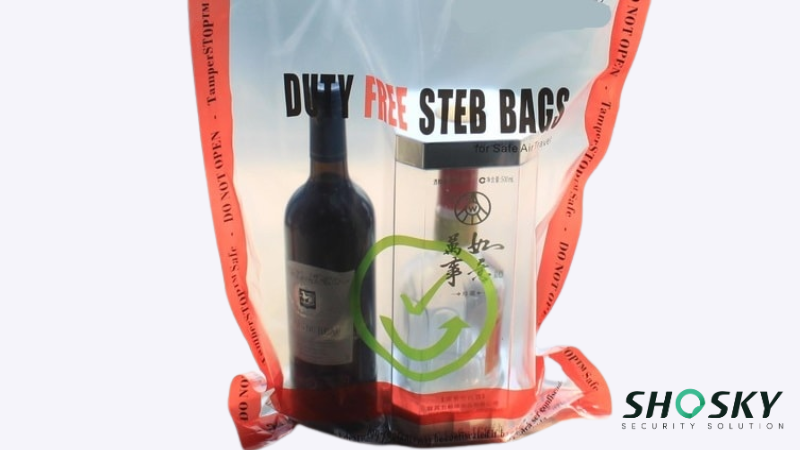
Most duty-free bags are made from clear plastic material to allow airport security officers to inspect their contents without opening them. This transparent design helps speed up airport security scanning (X-ray screenings), reducing delays at security checkpoints.
It also ensures that restricted items, such as liquids over 100ml, can be quickly identified without needing extra manual checks. Transparent bags also provide travelers with visibility, allowing them to easily locate their purchases while keeping everything organized.
Durable Material – Protection for Fragile Items
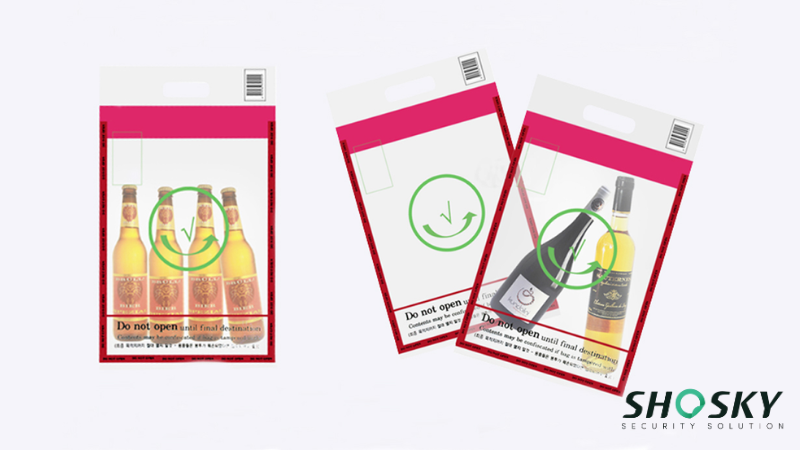
Many duty-free bags are made from strong plastic, reinforced paper, or fabric to protect fragile duty-free purchases like bottles of alcohol, cosmetics, or glass perfume containers.
High-quality materials help prevent damage during baggage handling, overhead storage, or transit through multiple flights. Some luxury duty-free bags even feature extra padding or sturdy handles, making them more convenient for carrying premium items.
Duty-Free Bag Regulations and Travel Restrictions
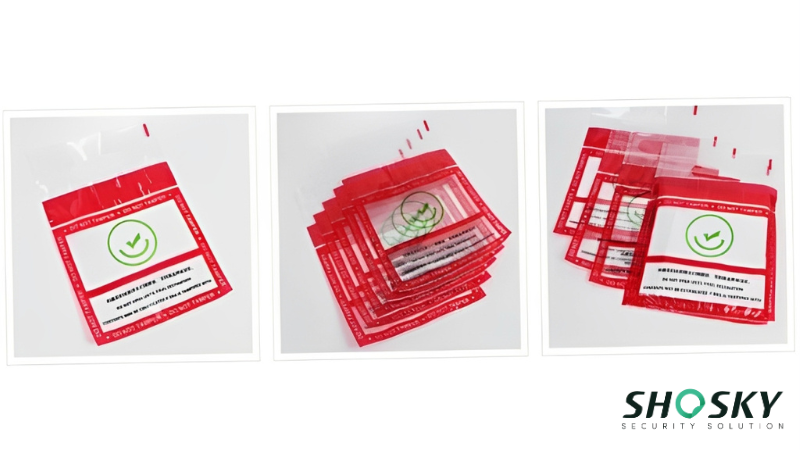
International aviation authorities, including TSA, IATA, and ICAO, set strict security rules for duty-free bags to prevent unauthorized tampering. These rules stop people from opening the bags without permission. Sealed bags that carry liquids over 100ml must stay closed. Guards check the seal and receipt. If the bag is open, they may take the item.
Airlines and airports have their own rules, too. Some only allow duty-free items on direct flights. Others stop at duty-free liquids during layovers. Check your airline’s rules before you buy. Rules change by location. You might have issues if you don’t check.
You can carry liquids over 100ml in a sealed bag. But you must buy them at a duty-free shop. The bag must stay sealed. If you travel through many airports, some countries have stricter rules. You may need to put duty-free liquids in checked luggage.
How to Use Duty-Free Bags Correctly?
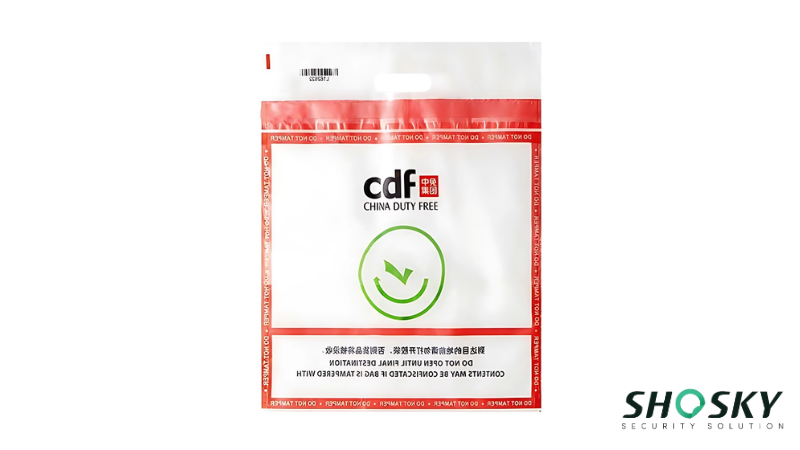
Duty-free bags aren’t just shopping bags—they’re part of airport security. Here’s what you need to know to use your duty-free bag the right way and avoid issues while flying.
Purchasing Process at Duty-Free Shops
Buying items at duty-free shops is the first step. When you buy liquids, perfume, or other restricted items, the shop will place them in a sealed, transparent security bag (STEB). Make sure the shop staff seals the bag correctly. They should also give you a receipt. Keep this receipt. It is proof of purchase.
Check that the bag is sealed and undamaged before you leave the shop. This will help you avoid problems at security checkpoints. Only buy duty-free items from recognized duty-free stores.
Properly Sealing and Handling the Bag
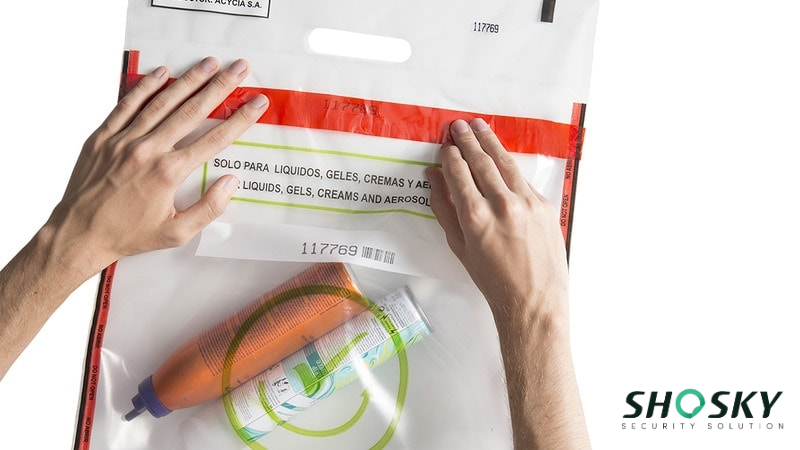
Once you have your duty-free bag, handle it with care. The tamper-evident seal is very important. Do not damage or break the seal. Keep the bag in a safe place. Avoid crushing or bending it. This could damage the seal or the contents.
When you go through security, present the bag as instructed. Follow the security officer’s directions. Handle the bag gently when placing it in your carry-on luggage. By handling the bag correctly, you ensure that it remains secure and compliant with regulations.
Avoiding Opening the Bag Before the Final Destination
It is important not to open the duty-free bag before you reach your final destination. Opening the bag breaks the tamper-evident seal. This can cause problems at security checkpoints. If the seal is broken, you may need additional screening.
Or your items might be taken away. This is especially true for connecting flights. Keep the bag sealed until you land and leave the airport at your final stop. By leaving the bag sealed, you follow the rules. This makes your travel smoother and prevents delays.
What to Do if a Duty-Free Bag is Damaged or Broken?
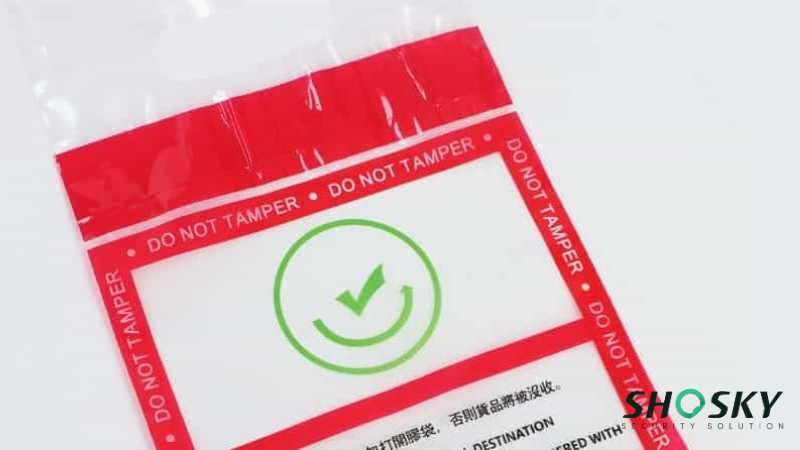
If your duty-free bag is damaged or broken during your trip, it’s crucial to act quickly to save your purchases. First, become aware that a broken seal may lead to issues with security. If you notice the damage before boarding the plane, return to the duty-free shop with your passport and receipt.
They might be able to replace the bag. If that’s not possible, and you’re carrying liquids exceeding the permitted hand luggage allowance, prepare for potential confiscation or the possibility of paying added taxes. Knowing the price of potential replacement items can help you decide if it’s worth the risk.
If you discover the damage mid-trip or during a connecting flight, present the broken bag and receipt to airport security. They will assess the situation and decide if the items can pass through. Depending on the destination country, you may be required to repack the items into compliant containers or face confiscation.
Benefits of Using Duty-Free Bags
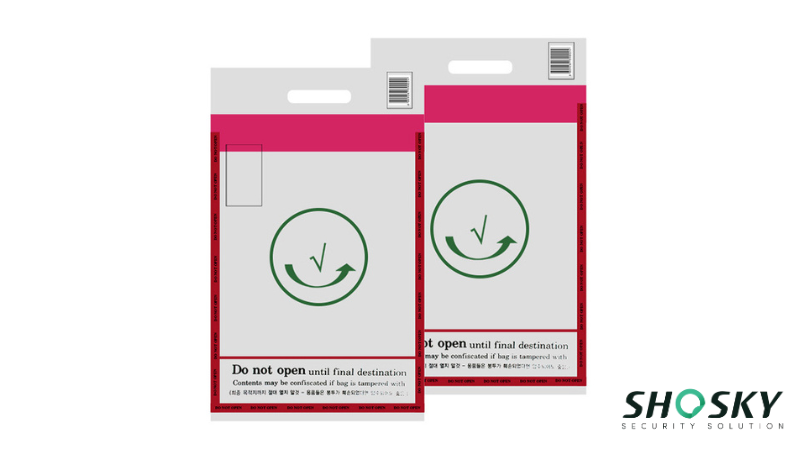
Duty-free bags help travelers in many ways. First, they protect items from tampering. Sealed bags show if they have been opened. This is important for liquids and other items. Second, these bags help people follow airline rules. They meet airport security standards. This makes going through security easier.
Also, duty-free bags make shopping easier. They let you carry many items at once. This is handy when you buy many things. These bags also help keep items safe. Strong carry-on bags protect fragile items. This is good for things like perfume and alcohol. Finally, they help speed up security checks. Clear bags let guards see inside quickly. This makes the process faster for everyone.
Common Misconceptions About Duty-Free Bags

Many travelers make wrong assumptions about how duty-free bags work, especially when flying internationally. These misunderstandings can lead to delays, extra screening, or even having your items taken away. Let’s clear up some of the most common myths:
| Myth | Fact |
|---|---|
| All duty-free bags are tamper-proof | Only Sealed Tamper-Evident Bags (STEBs) have security seals that show signs of tampering. Regular branded duty-free shopping bags do not offer this protection. |
| Duty-free bags can be opened and resealed without issues | Once a STEB is opened, it cannot be resealed. Breaking the seal before reaching the final destination may result in confiscation at security checkpoints. |
| You can bring unlimited duty-free bags on board | Airlines and airports may restrict the number or size of duty-free purchases in cabin baggage. Customs regulations may also apply, leading to taxes or confiscation. |
| Duty-free bag regulations are the same worldwide | Different countries and airlines have varying policies on liquid restrictions, duty-free bag acceptance, and security rules. Travelers should check regulations before buying duty-free goods. |
Understanding these facts can help you avoid surprises during your journey. Always check airline and airport rules before buying duty-free items, and make sure your bag stays sealed until you reach your final destination.
FAQs
Can I bring multiple duty-free bags on a flight?
Yes, but airlines may limit the number or size of duty-free bags allowed in carry-on luggage, and customs rules may apply.
What happens if my duty-free bag is opened before I reach my destination?
If a Sealed Tamper-Evident Bag (STEB) is opened, security may confiscate restricted items, especially liquids over 100ml.
Are all duty-free bags tamper-evident?
No, only STEBs have tamper-evident seals for security. Regularly branded duty-free bags are not designed to prevent tampering.
Conclusion
Duty-free bags play an important role in travel security and convenience. By using sealed tamper-evident bags (STEBs) correctly, travelers can protect their purchases and comply with aviation security rules. To truly elevate your travel experience and guarantee the safety of your duty-free goods, consider investing in reliable, high-quality STEBs.
Avail ICAO-Approved Duty-Free Bags From Shosky Now!
Shosky Security specializes in custom tamper-evident solutions, including Sealed Tamper-Evident Bags (STEBs), security tapes, and labels designed for airport security and duty-free retail. Our high-performance solutions ensure product integrity and compliance with international aviation standards. Contact us today and enhance security for duty-free purchases!
